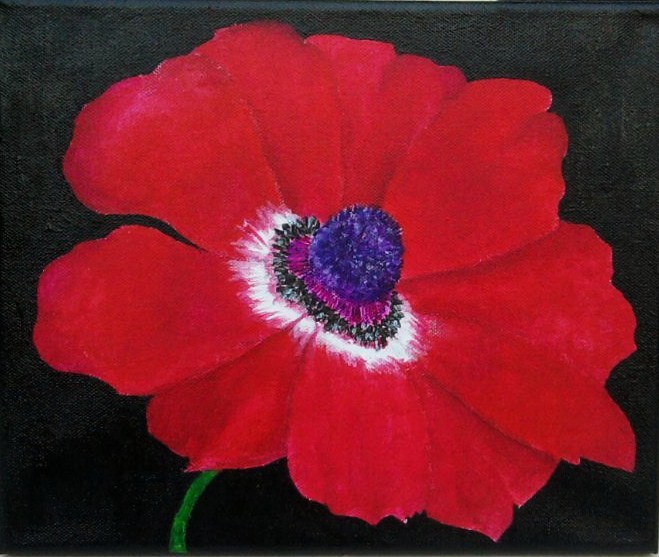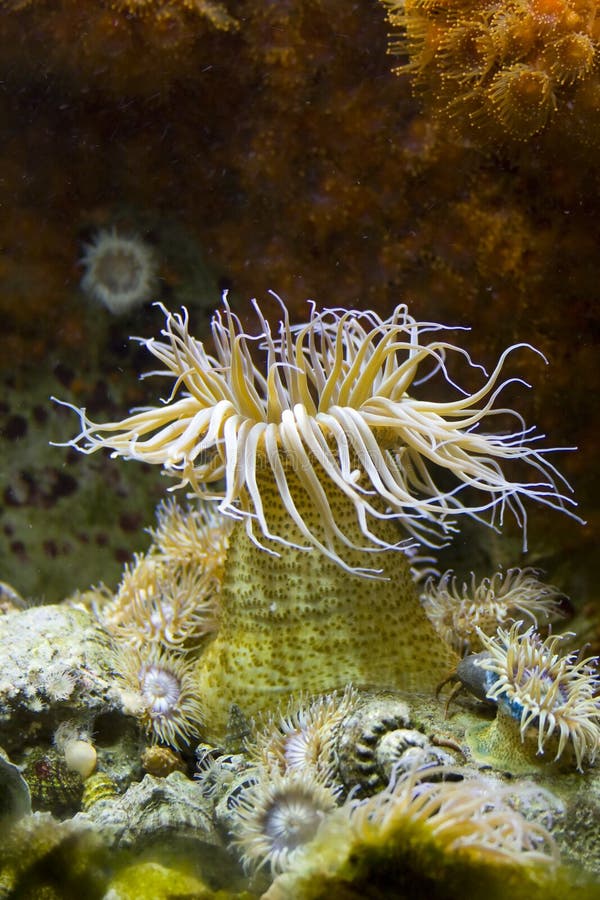

Īnemone coronaria is widely grown for its decorative flowers, and has a hardiness of USDA zones 7–10, preferring full sun to part shade. By the beginning of the eighteenth century, breeders in France and Italy had already considerably improved the range of colours available. Cultivation Īnemone coronaria was introduced into England prior to 1596, being described in Thomas Johnson's edition of John Gerard's Herball, first published in 1597 and was popular during the time of Queen Elizabeth I. coronaria is winter flowering and cross pollinated by bees, flies and beetles, which can carry pollen over long distances.

The vast red carpets of anemones have become a major tourist attraction of the northern Negev region of Israel in recent years. Red carpet of flowers in Shokeda Forest, Israel, 2012. Mediterranean littoral, from Greece, Albania, southern Turkey and Syria to the Sinai Peninsula with sporadic extension east to Iran and west along the Mediterranean shores of Italy, southern France and North Africa. During the British Mandate for Palestine, British paratroopers were nicknamed "kalaniyot" for their red berets. Each year in Israel there is a month-long festival to celebrate the blooming of the red anemones. In 2013 Anemone coronaria was elected as the national flower of the State of Israel, in a poll arranged by the Society for the Protection of Nature in Israel (החברה להגנת הטבע) and Ynet. "Kalanit" comes from the Hebrew word "kala כלה" which means " bride", "metzuya" means "common." The kalanit earned its name because of its beauty and majesty, evoking a bride on her wedding day. In Hebrew, the anemone is kalanit metzuya. According to myth, the flower thrived on An-Nu'man's grave, paralleling the death and rebirth of Adonis. An-Nu'man is known to have protected the flowers during his reign. Another possible source of the name is An-Nu'man III Bin Al-Munthir, the last Lakhmid king of Al-Hirah (582-c.609 AD) and a Christian Arab. Tammuz's Phoenician epithet "Nea'man" is believed to be both the source of "an-Nu'man" in Arabic which came through Syriac, and of "anemone" which came through Greek.

The deity is transformed into a flower, stained by the blood of Adonis. Tammuz is generally considered to have been drawn into the Greek pantheon as Adonis, who died of his wounds while hunting wild boar. One possible source of the name traces back to the Sumerian god of food and vegetation, Tammuz, whose Phoenician epithet was "Nea'man". The Arabic name is shaqa'iq An-Nu'man translated literally as the wounds, or "pieces", of Nu'man. Etymology Īnemone coronaria means crown anemone, referring to the central crown of the flower, evoking regal associations. It is also the type species for the subgenus.
#Anemona dofus series#
This series is a clade of Mediterranean tuberous anemones. coronaria is placed within subgenus Anemone, section Anemone, subsection Anemone and is one of five species making up series Anemone, together with A. Īside from its flowers resembling poppies, the red single wild form flowers resemble the flowers of the red single wild form of Ranunculus asiaticus. The plants form hard black tubers as storage organs. This central mound consists of tightly packed pistils in the centre, with a crown-like ring of stamens surrounding this, giving the species its specific epithet coronaria. The pollen is dry, has an unsculpted exine, is less than 40 nm in diameter, and is usually deposited within 1.5 m of its source. The flowers which bloom from April to June are borne singly on a tall stem with a whorl of small leaves just below the flower the flower is 3–8 cm in diameter, with 5–8 red (but may be white or blue) showy petal-like tepals and a black centre. Anemone coronaria, the poppy anemone, Spanish marigold, or windflower, is a species of flowering plant in the buttercup family Ranunculaceae, native to the Mediterranean region.Īnemone coronaria is a herbaceous perennial tuberous plant growing to 20–40 cm (7.9–15.7 in) tall, rarely to 60 cm (24 in), spreading to 15–23 cm (5.9–9.1 in), with a basal rosette of a few leaves, the leaves with three leaflets, each leaflet deeply lobed.


 0 kommentar(er)
0 kommentar(er)
